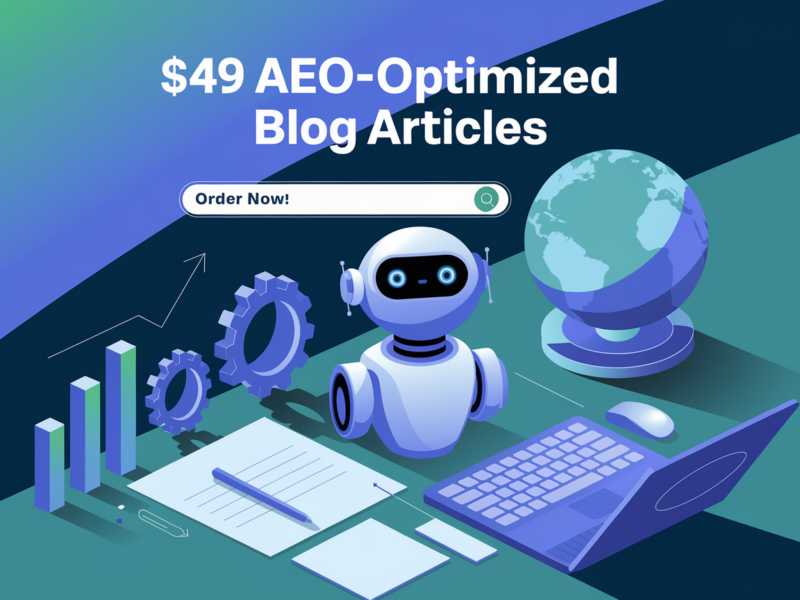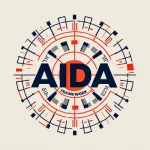
Achieving high visibility on AI-powered platforms requires more than just traditional SEO. Optimizing for AI visibility through AEO (Answer Engine Optimization) and SEO indexing techniques ensures your content is seen and prioritized in AI-driven searches. This guide covers the essential fields and tags you need to stay ahead.
Key Content Fields to Optimize for AI and SEO Indexing
To appear as a top answer in AI-driven and voice-activated searches, these content fields should be well-structured and complete.
Title
Your title is the first thing both AI systems and users see. Keep it concise and ensure it contains your main focus keyword to immediately convey relevance.
Meta Description
The meta description is a short summary that gives AI a quick understanding of your content. Include the focus keyword here as well, since this field often influences which content AIs pick as an answer.
Focus Keyphrase and Related Keyphrase
The focus keyphrase captures the primary topic of your content, while related keyphrases add context, helping AI recognize content relevance and breadth.
Slug
The slug, part of your URL, should be short, clear, and include your focus keyword. A well-optimized slug signals the content’s purpose and boosts both SEO and AEO.
SEO Title
Separate from the main title, this can be a longer version with additional keywords, giving search engines and AI more context for indexing.
Technical SEO and AEO Fields for Better AI Indexing
Meta Robots Index and Meta Robots Follow
These tags let you control how search engines interact with your content. “Index” tells AI to include your page in search results, while “Follow” lets it crawl any links on the page.
Canonical URL
The canonical URL tells AI which version of a page is the primary one, preventing duplicate content issues and ensuring consistent indexing.
Open Graph and Twitter Tags
For social sharing, Open Graph (OG) tags like OG title, description, and image create an engaging preview. Twitter-specific tags do the same on Twitter, and both are indexed by AI systems.
Breadcrumb Title
Breadcrumbs help users navigate and show AI the content hierarchy, enhancing clarity on where a page fits into your overall site.
Schema Markup
Schema markup is structured data that AI systems use to interpret your content’s context. Adding schema markup improves how AI interprets and ranks your content.
FAQs for AEO-Optimized Content Fields
Why are these content fields essential for AI indexing?
Each field helps AI interpret, categorize, and rank your content. Titles, keyphrases, and schema markup, for instance, signal the relevance and quality of your content, boosting visibility.
What is a slug, and why does it matter?
A slug is the part of your URL that describes the page topic. Short and keyword-focused slugs improve SEO, helping AI quickly recognize and categorize the content.
How does schema markup affect AI results?
Schema markup is like giving AI a map of your content. It clarifies what each piece of information means, making your content more likely to show up in rich snippets and voice-activated responses.
Are Open Graph and Twitter tags necessary for AEO?
Yes, especially if you share content on social media. These tags create visually engaging previews that not only help with engagement but also contribute to your AEO strategy.
What if I don’t have the ability to manage these fields?
That’s where the Aida Framework can help. It can handle all of these fields—from title to schema markup—to ensure your content is indexed accurately.
Can Aida Framework improve my SEO score as well?
Yes! By managing essential SEO and AEO fields, the Aida Framework helps boost your overall SEO score, making sure your content ranks well on both traditional and AI-driven search engines.
Quality and Readability Fields for AI-Friendly Content
Content Length and Readability Analysis
A good content length keeps readers engaged and satisfies AI. Readability analysis tools can ensure your content is clear and easy to follow, which AI systems often prioritize.
Internal Links and Outbound Links
Internal links improve site navigation, while outbound links to credible sources build authority. Both link types enhance SEO and help AI map content relevance.
Social Previews and XML Sitemaps
Social previews show users what to expect, and XML sitemaps help AI quickly index all content on your site, making sure no page is overlooked.
Redirects
Redirects prevent broken links by guiding users (and AI) to the correct content, maintaining site integrity and optimizing user experience.
Advanced Optimization: Fine-Tuning Content for AI Recognition
Passive Voice Reduction and Sentence Length
AI generally favors active voice, as it’s clearer and easier to read. Keep sentences concise, ideally under 20 words, to improve readability scores.
Subheading Distribution and Transition Words
Use subheadings every 250 words to break up text and add transition words to improve flow. These steps enhance user experience and make content more readable, both of which AI systems value.
Keyphrase Density and Image Alt Attributes
Maintain a balanced keyphrase density without overuse. Alt text for images, when keyword-rich and descriptive, improves accessibility and contributes to SEO.
Getting Started with AEO and SEO Optimization
If you’re looking to improve your AI visibility but lack the technical setup to manage these fields, the Aida Framework is your solution. This tool automates the integration of these key SEO and AEO elements, making sure your content is correctly indexed, fully optimized, and ready to rank.
By adopting this approach, your brand can become the go-to choice on AI-powered platforms. Ensure that every essential field is set up correctly and indexed accurately to stay ahead of competitors and connect with a larger audience.
If you want to know more about Answer Engine Optimization, Read the Book; From SEO to AEO, usually listed on Amazon for $99 USD, is now available through Aida Framework for only $49 USD
AEO Fields for the Article
1. Title Tag
- Title: Maximizing AI Visibility: Essential Content Fields for AEO and SEO Indexing
- Best Practice: The title is concise and keyword-rich, covering both AEO and SEO indexing.
2. Meta Description
- Meta Description: Learn how to boost AI visibility with essential content fields for AEO and SEO. This guide covers every key element needed for optimal indexing by AI-driven platforms.
- Best Practice: Include the main keywords, like “AI visibility,” “AEO,” and “SEO indexing,” to improve relevance in search results.
3. Focus Keyphrase
- Keyphrase: AI Visibility for AEO and SEO Indexing
- Best Practice: Use this phrase consistently throughout the article, title, and meta description to align with user search intent.
4. Related Keyphrases
- Related Keyphrases: “Answer Engine Optimization,” “SEO for AI platforms,” “content optimization for AI,” “SEO fields for AI”
- Best Practice: Sprinkle these related phrases naturally in headings and throughout the content to enhance context.
5. Slug (URL)
- Slug: maximizing-ai-visibility-essential-aeo-seo-indexing
- Best Practice: Keep the slug short, readable, and relevant, ensuring it contains the primary keywords.
6. SEO Title
- SEO Title: Maximizing AI Visibility | Essential AEO and SEO Indexing Tips
- Best Practice: Alternative title, possibly shorter, optimized for search engines, and includes primary keywords for AI visibility.
Technical AEO Tags
7. Meta Robots Tags
- index, follow
- Best Practice: Allow search engines to index the page and follow links.
8. Canonical URL
- Canonical URL: Ensure that this article URL is marked as canonical to avoid duplicate content issues.
9. Schema Markup
- Article Schema Markup: Use structured data (e.g.,
@type: Article) to specify that this is an informational article. - Best Practice: Add additional properties, such as
headline,author,datePublished, andimage.
10. Open Graph Tags
- OG Title: Maximizing AI Visibility: Essential Content Fields for AEO and SEO Indexing
- OG Description: Discover all the essential fields needed to optimize your content for AI visibility, from AEO to SEO indexing.
- OG Image: Upload a relevant image that visually represents the article’s theme.
11. Twitter Card Tags
- Twitter Title: Maximizing AI Visibility for AEO and SEO
- Twitter Description: Learn the top fields to optimize for AI-driven indexing and boost your brand’s visibility.
- Twitter Image: Use a high-quality, eye-catching image (consistent with OG Image).
Internal AEO Optimization Fields
12. Breadcrumb Title
- Breadcrumb: Home > Blog > SEO Tips > Maximizing AI Visibility for AEO and SEO
- Best Practice: Ensures users and search engines understand the page hierarchy.
13. Cornerstone Content
- Cornerstone: Yes (If this is foundational content, mark it as cornerstone to indicate it’s a primary resource on AEO/SEO).
- Best Practice: Link to this article from other related content to improve site structure.
14. Internal Links and Anchor Text
- Internal Links: Link to related articles on SEO, AEO, or content optimization.
- Anchor Text: Use phrases like “optimizing content for AI” or “AEO best practices.”
15. XML Sitemap
- Sitemap Inclusion: Ensure the article is in the XML sitemap.
- Best Practice: Regularly update the sitemap so search engines can quickly index new content.
16. Primary Category
- Category: SEO or AI Content Optimization
- Best Practice: Selecting a primary category helps with organization and AI indexing.
User Experience Optimization Fields
17. Readability Analysis
- Readability: Aim for a Flesch Reading Ease score above 60.
- Best Practice: Use shorter sentences and simple language to improve readability and user experience.
18. Social Previews
- Social Previews: Verify how the article will look on social media platforms using the Open Graph and Twitter tags.
- Best Practice: Ensure the title, description, and image are engaging and aligned with the article’s theme.
19. Content Length
- Content Length: Aim for 1,500+ words to provide comprehensive coverage.
- Best Practice: Longer content generally ranks better and provides AI with in-depth information.
20. Passive Voice Reduction
- Passive Voice: Minimize passive voice to improve clarity.
- Best Practice: Keep passive voice below 10% for readability.
21. Transition Words
- Transition Words: Use transitions like “furthermore,” “in addition,” “for instance,” etc.
- Best Practice: Aim for transition words in at least 30% of sentences.
22. Subheading Distribution
- Subheadings: Use H2 and H3 tags every 200-250 words.
- Best Practice: Subheadings improve readability and help AI and search engines scan for topic relevance.
Image and Media Optimization Tags
23. Image Alt Attributes
- Alt Text for Images: Descriptive text for each image, including keywords like “AEO,” “SEO,” and “AI visibility.”
- Best Practice: Improves accessibility and provides search engines with context.
24. Open Graph and Twitter Images
- Images: Use visually engaging images, aligned with Open Graph and Twitter tags, to improve shareability and visibility.
Keyphrase Optimization and AEO Analysis
25. Keyphrase Density
- Density: Maintain a balance with 1-2% keyphrase density.
- Best Practice: Avoid keyword stuffing; aim for natural, strategic placement.
26. SEO Score
- SEO Score: Aim for a high SEO score using tools like Yoast or Rank Math.
- Best Practice: Regularly review and adjust SEO elements to keep content optimized.
27. Content Insights
- Insights: Review word count, readability, and structure insights to refine content for user intent.
- Best Practice: Use insights to guide adjustments, focusing on readability and relevance.
Monitoring and Analysis Tools
28. Readability and SEO Analysis Tools
- Tools: Use Yoast SEO, Rank Math, or SEMrush for in-depth readability and SEO analysis.
- Best Practice: Continuously optimize based on analysis to maintain competitive rankings.
29. Internal Linking Suggestions
- Suggestions: Look for opportunities to link this article to related content within your site.
- Best Practice: Internal links improve SEO and help users discover relevant content.
Héctor Castillo – Noysi & AidaFramework.com Founder

Comments